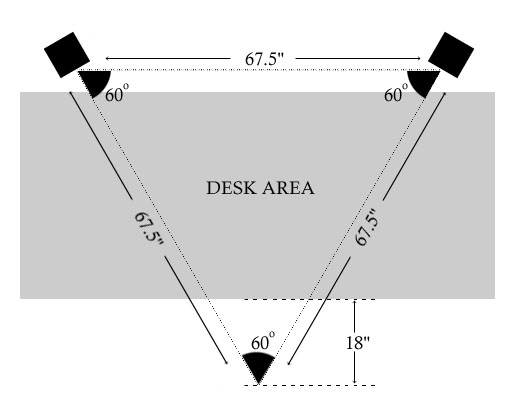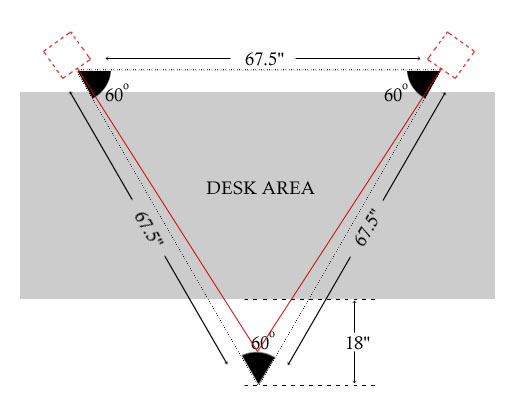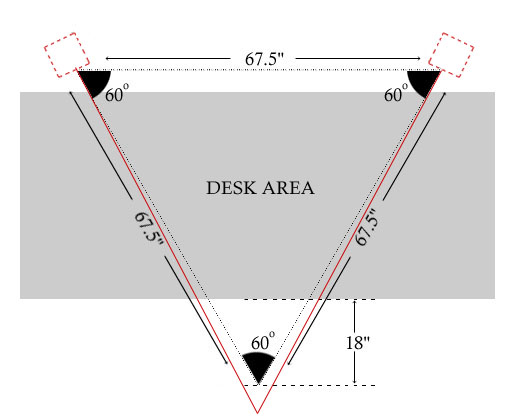SouthSIDE Glen
independentrecording.net
Oh,come on, miro, now you're just being ridiculous. Here's what GuitarLegend is saying, all of which both makes sense and agrees with what both you and I agree with:I'm sure Glen will spend at least another 3-4 posts trying to convince you that the improvement you *actually heard* is all in your mind...and that it doesn't make any difference what distance or angles you use
There's no controversy or disagreement that I can see there. He pointed his tweeters in towards him and made the speakers equidistant to his listening position, each of which improved the detail of his sound, which they both absolutely should. So far so good. And I am happy that he did improve his sound those ways, snot only for him personally which is the most important thing - but also because it just confirms and solidifies everything all of us have been saying all along.GuitarLegend said:When I changed the angle, that is, pointed the speakers inward, I heard one level of improvement. When I brought the farther speaker closer in I heard another level of improvement.
Bit he still does not have an equilateral triangle. And he's off by a whole third, not just a degree or two.
And I still have not found, nor can figure out myself, any actual science or math or real-life test that explains WHY that 60° angle is any better than any other for creating a stereophonic image, or actually demonstrates that it's actually true. And I'm still waiting or you to supply it.
And I'll go so far as to bet that more than half of those out there who *think* they are set up at 60° are actually mostly at a wider angle than that most of the time, and don't even realize it.
I'm sitting in front of my home DAW with a tape measure right now, for example. My Mackies are not that wide apart; the distance from the inside edge of one speaker to the other is actually only 38 inches, a pretty typical spread. If I truly wanted to put 38" between the speakers and my head while working and sitting in a physically comfortable position, I have to lean back in my chair in a way where working on my control surfaces and DAW keyboard and such would be awkward and uncomfortable. But when I lean in to actually work, because that 38" is really such a small distance, that lean in put me a good 7"+ closer to each speaker.
That 7"+ changes the angle from 60° to almost 76°. Nowhere near the 95° I sight-estimated last night, and I apologize for that mistake. But still a whopping 26% difference from the alleged "ideal". And yet my ears don't care; I can still hear and manage the stereo space just fine when I lean in to create a more than one-quarter greater angle than the conventional faith believes is necessary.
EDIT: Oh wait, I was right last night after all...
That speaker-to-speaker measurement above was from speaker cabinet to speaker cabinet. If I actually measure from the center of each woofer or tweeter to the center of the other, the distance is 46" That changes the angle at my lean-in position to some 95.7°. A whole 60% difference. It turns out my eyeball estimate last night was almost right on. And If I were to sit 46" away from the speakers, I could barely reach the DAW keyboard.
And I will bet that what I have, pictured below, is not that different from most folks out there who have never had a problem with panning or sound either. I have upgraded much of the equipment since this picture was taken some 11 years ago or so, but the speakers, the desk and the positions of both of those remains the same to this day:

So when the difference between sitting back and leaning in, or from the speaker cab measurement to the center-of-speaker measurement can make a 60% difference n the actual physical angle and not make a difference to one's ability to work, I'd have to say that the real live evidence supports what the math says on paper, in that the 60° angle idea is arbitrary and meaningless.
EDIT2: And now that GL has confirmed that changing his angle from 80° to 60° has made no real difference (below), there is independent confirmation of that fact.
G.
Last edited:




 is that you've been counter-arguing against that adopted "optimum" setup but have on more than one occasion stated that YOU would prefer something that is actually very close to the "myth" setup, rather than what you currently have in that studio you currently use, and the only reason you don't is because the room/gear layout doesn't allow it.
is that you've been counter-arguing against that adopted "optimum" setup but have on more than one occasion stated that YOU would prefer something that is actually very close to the "myth" setup, rather than what you currently have in that studio you currently use, and the only reason you don't is because the room/gear layout doesn't allow it.





